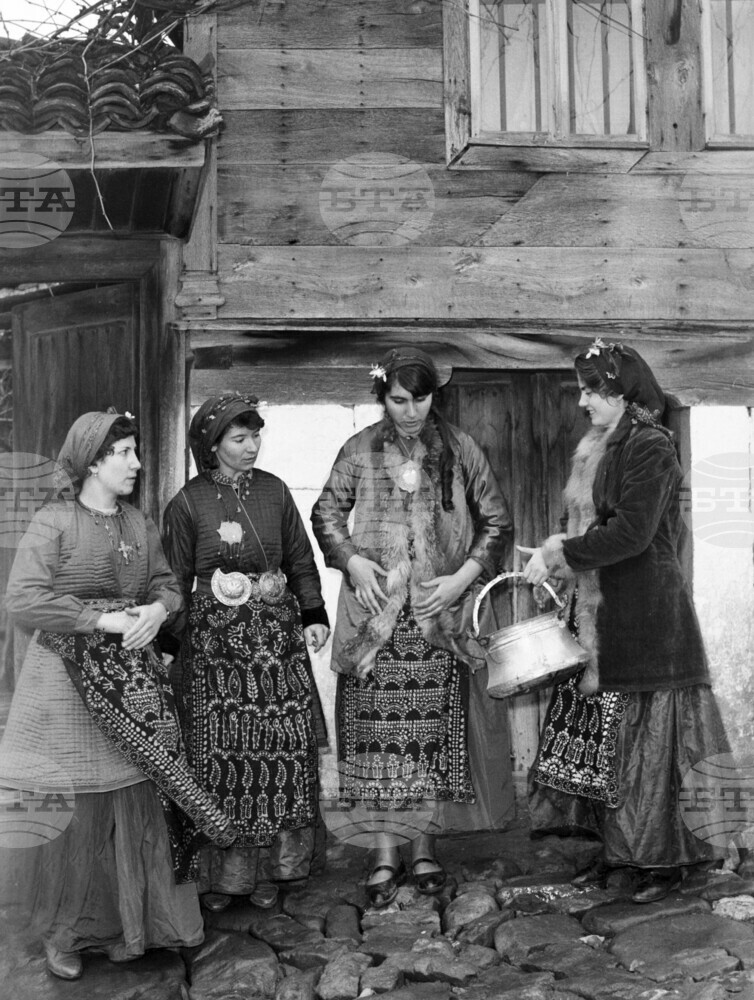site.btaAmi Boué and His Travel Notes Rediscovering Bulgaria


Ami Boué (born in Hamburg on March 16, 1794, died in Vienna on November 21, 1881) was a geologist of French Huguenot origin. He travelled much in Scotland, Germany, Austria and Southern Europe, becoming one of the pioneers in geological research. Between 1836 and 1839, he embarked on an expedition to the Balkan Peninsula, including present-day Bulgaria, where he carried out extensive geographic and naturalistic studies.
His contributions to geography and geology were surpassed in later years. But his travel notes and first-hand observations during his expeditions remain a priceless source for studying the history of Balkan peoples, their economy, culture, habits and ways.
He left remarkable sketches not only about natural history, local industry and trade, but about how people in the Balkans – including Bulgaria - dress, what they eat and drink, how they behave; about marriages, cuisine, language, customs.
Boué was not the first to uncover the world of the Ottoman Balkans to Europeans. The number of foreign travellers who visited the Ottoman Empire in the 15th-18th centuries and especially in the 19th century was not small at all. For instance, French travellers before Boué number a few dozen. But his notes and evaluations differ from his predecessors’ observations in several ways.
First of all, unlike most European travellers, his education covered several fields. He studied in Hamburg and Geneva, then studied medicine in Edinburgh. His education, experience, linguistic skills and interests make him a unique contributor to various fields of studies: from geology, geography and botany to economy, ethnography and linguistics. His capital work, usually referred to as “La Turquie d'Europe” [The European Turkey] (Paris, 1840) is titled “Turkey in Europe, or Observations on the Geography, Geology, Natural History, Statistics, Customs and Habits, Archaeology, Agriculture, Industry, Commerce, Various Governments, Clergy, History and Political State of this Empire”. A long and indicative list of topics that exceeded by far the expected result of a professional geologist’s study!
Secondly, he was very far from worshiping the “exotic” of the Orient and even mocked the approach of travellers who, ignorant of the language and local customs, commented on objects seen as a sensation.
Boué was aware of the challenges of his travel from the beginning. In a letter (1837) to the editor of “The Edinburgh New Philosophical Journal” he explained that “all the best maps are crowded with false indications; I mean not only false or ill-spelled names, but ill-placed localities.”
Not all of Boué’s notes are perfect, all the more so that he had to rely on hearsay and interviews with people of varying reliability. But at least he made efforts to indicate his sources.
It might be that geology itself, with its stress on natural cause-and-effect links, helped him to look for explanations and reasons behind facts and impressions. Thus, he was able to see and record details that often remained hidden from the eye of military men, diplomatists, tradesmen and adventurers that had left travel notes about the mysterious Orient. While compiling his “Itineraries in European Turkey: Geographical, Topographical and Statistical Details on the Empire”, Vienna 1854”, he left short descriptions of towns and villages visited (like Ihtiman or Zlataritsa) of a concise dictionary quality. In Etropole he noticed traces of ore-mining industry; in Chiprovtsi, it was the production of local carpets that are now on the UNESCO List of the Intangible Cultural Heritage of Humanity. (“Young girls, under shelters or in corridors, engage in carpet weaving. They earn only five francs a month and the payment was even lower before”.)
The taste for strict observation was probably developed from his natural history studies. But he applied this special gift to whatever topic he chose to deal with: architecture, a mountain slope or pronunciation. For instance, he dedicated three pages to the way Bulgarian women dress, the colours they prefer, the way they carry their pinafores, the adornments they use. He was obviously impressed by the pafti belt buckles that women he met in the region of Sofia wore: “two great copper or silver-plated medallions, convex and round in shape, adorned with reliefs, 4 inches in diameter”… And, “A nice suit, especially when worn by beautiful women”, he remarks after describing garments from Gabrovo and Sevlievo…
In 1849, Boué published the first ethnological map of the Balkan Peninsula. He noted: “The Bulgarians inhabit Bulgaria, Lower Moesia and the greater part of Upper Moesia; they make up the main nucleus of the population in Macedonia, with the exception of the extreme southwestern part from Kostur to and along Bistrica River.” And marked in detail territories where “only Bulgarian is spoken”. To him, Bulgarians were “hard-working and easy-to-manage people, as long as they are treated humanely”.
Streets are named after him in Bulgaria, Hungary and Austria, and there is Ami Boué Bluff on Graham Land in Antarctica.
/YV/
news.modal.header
news.modal.text